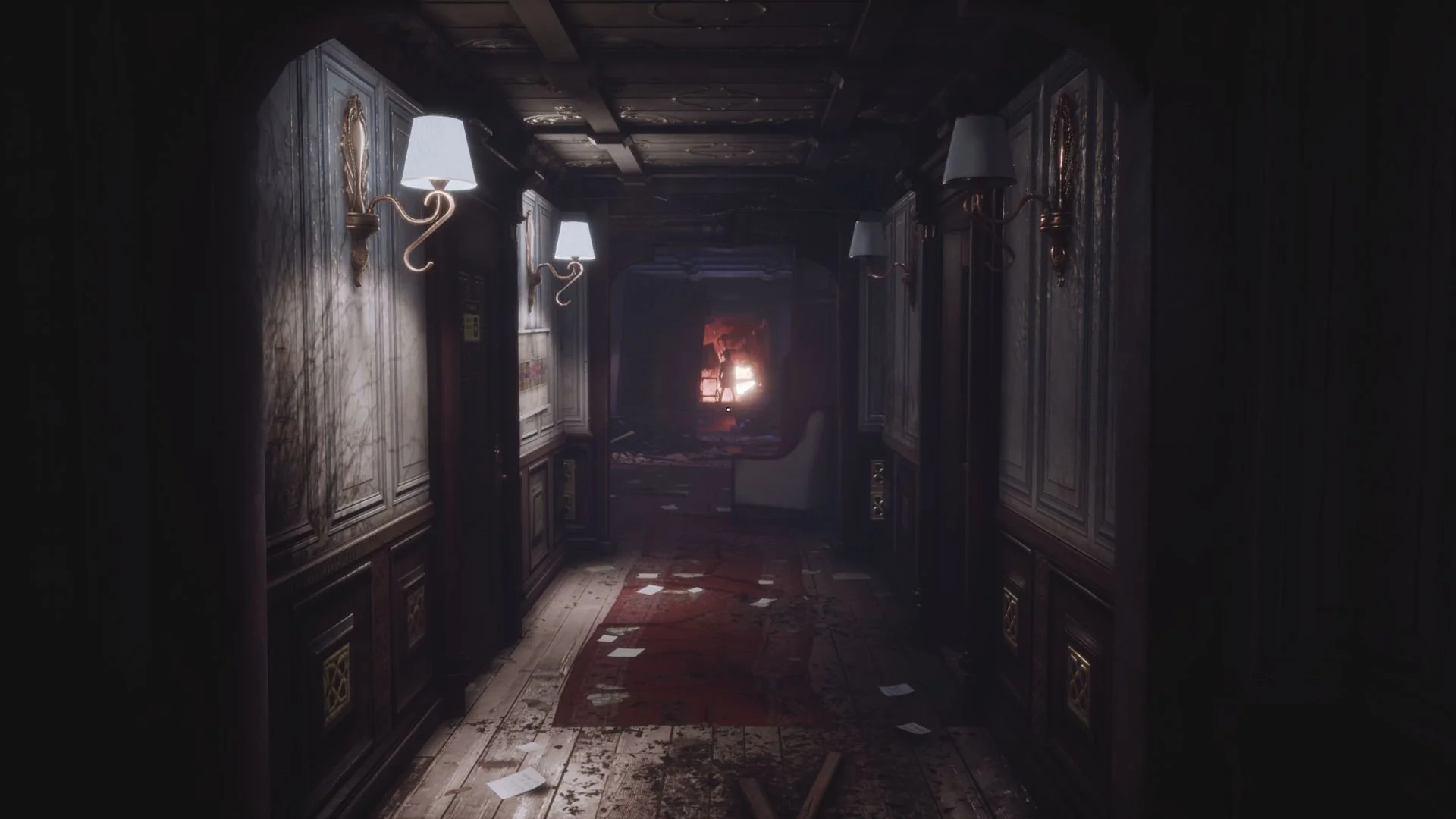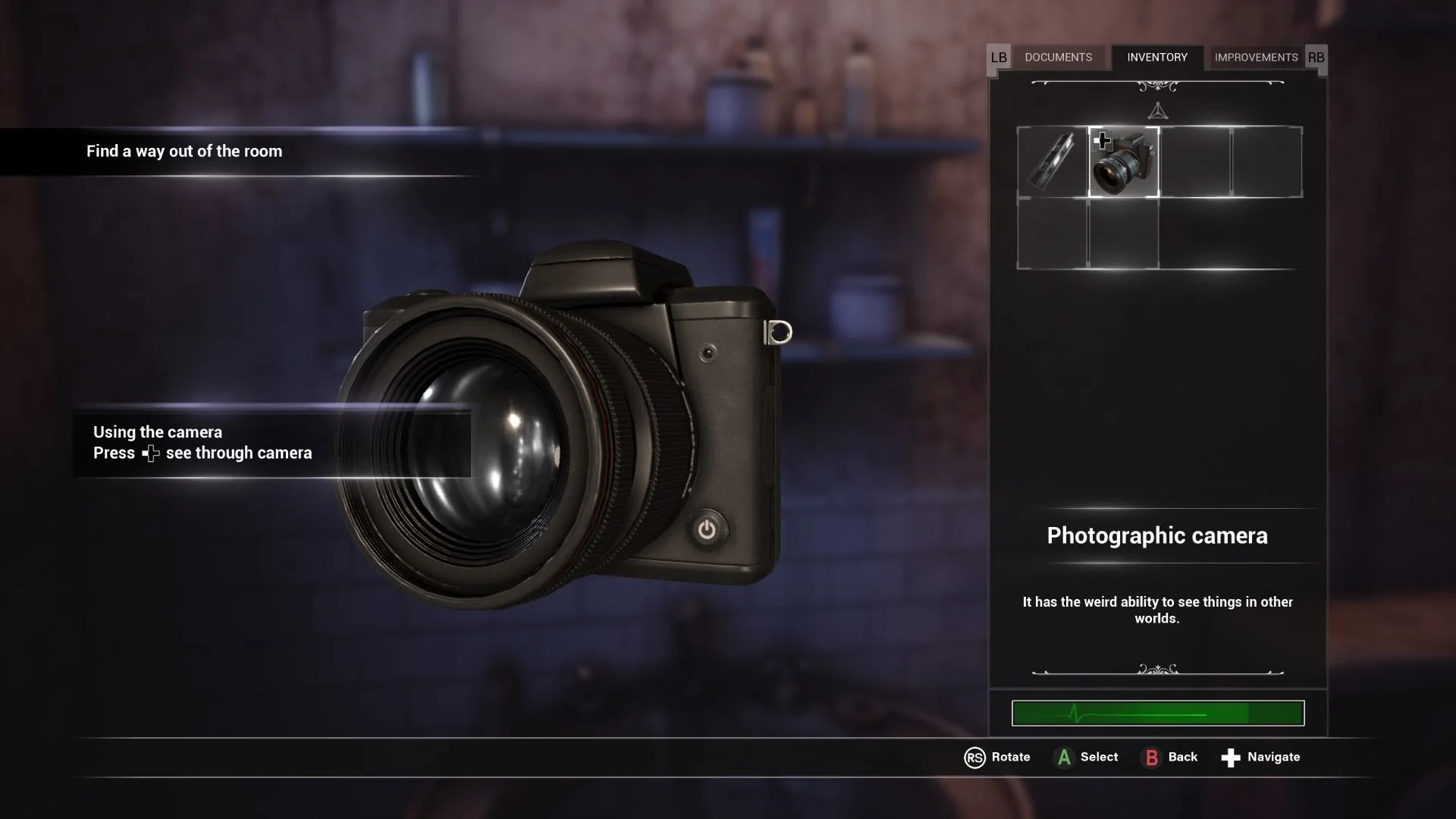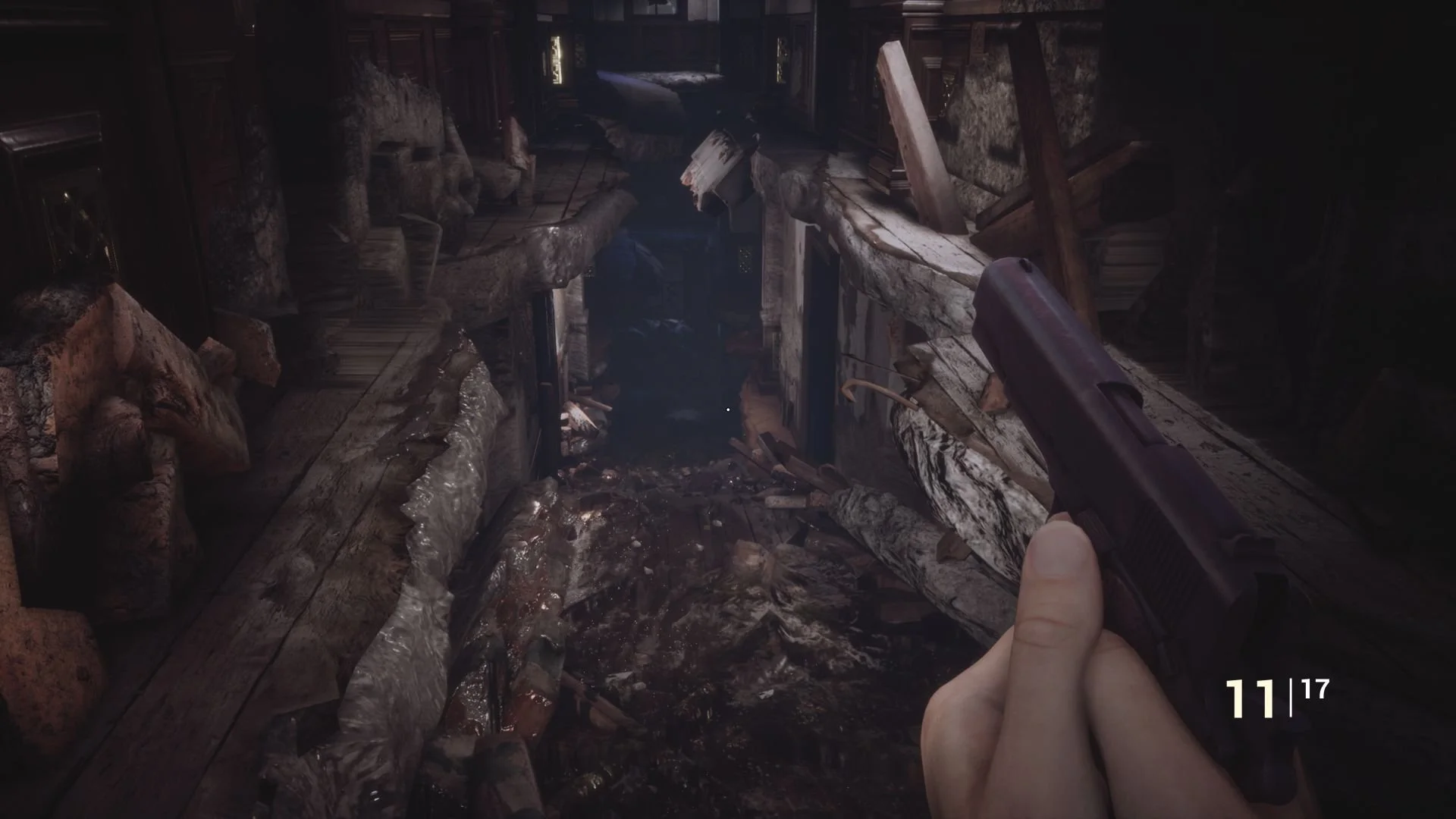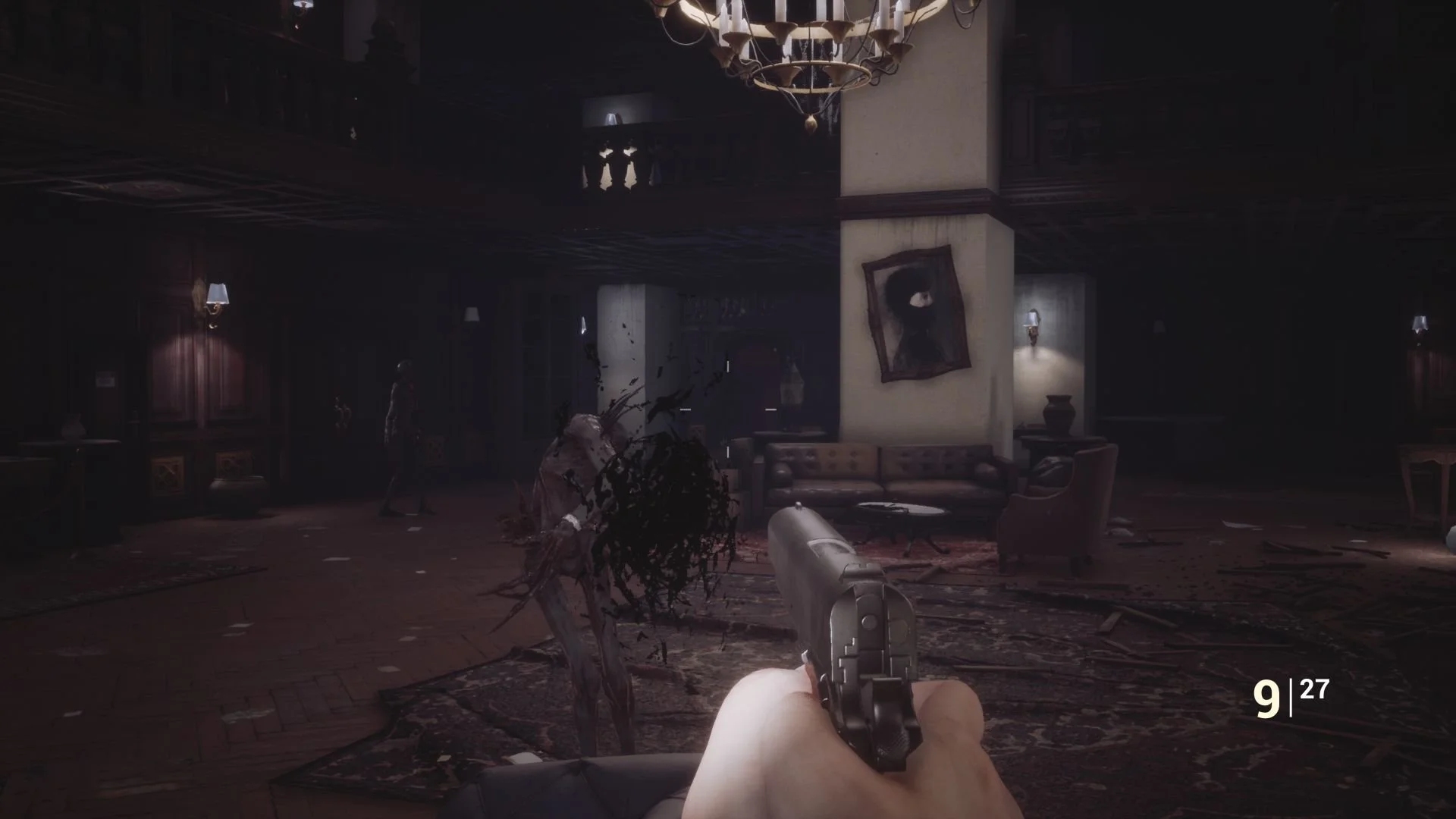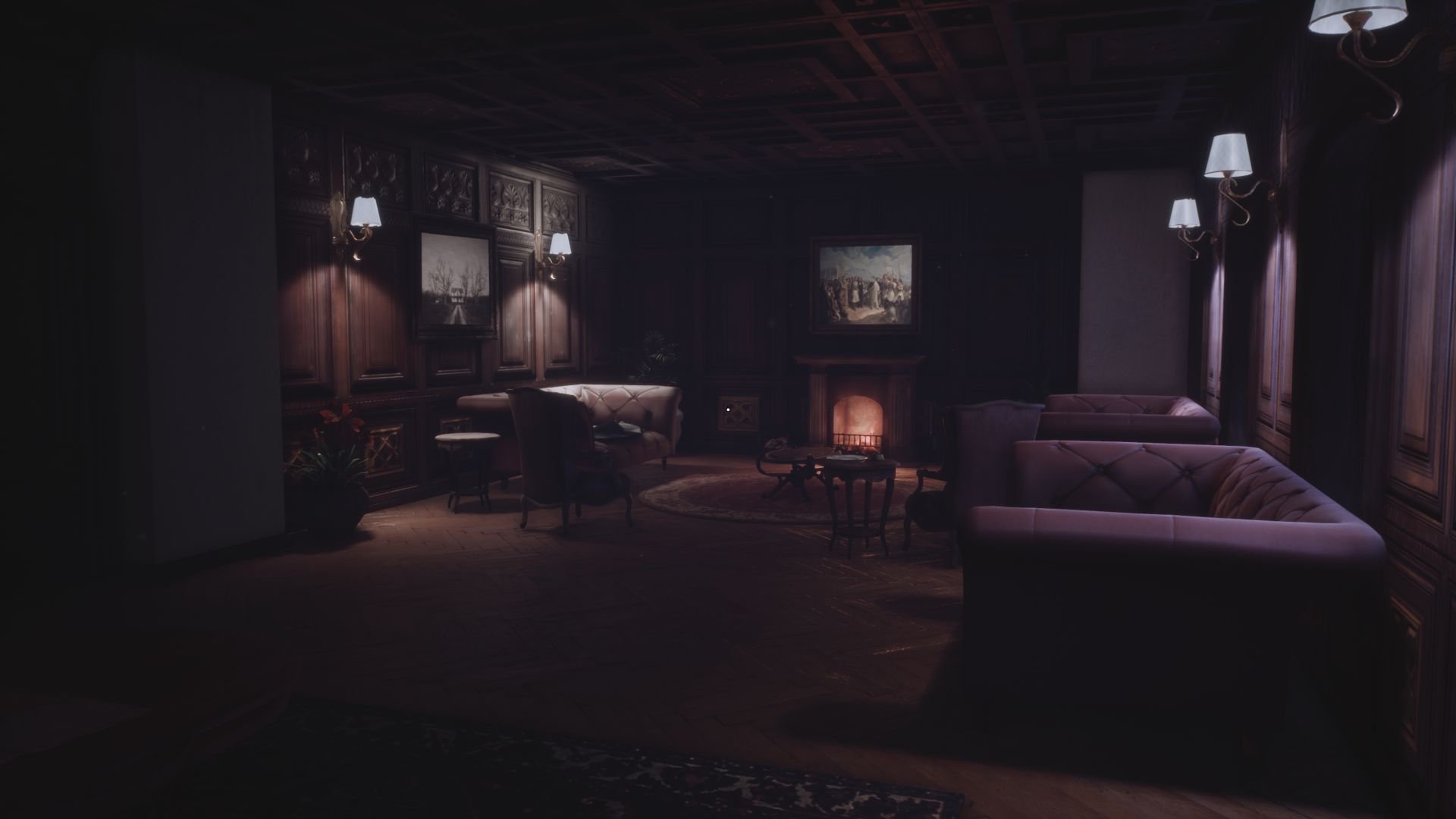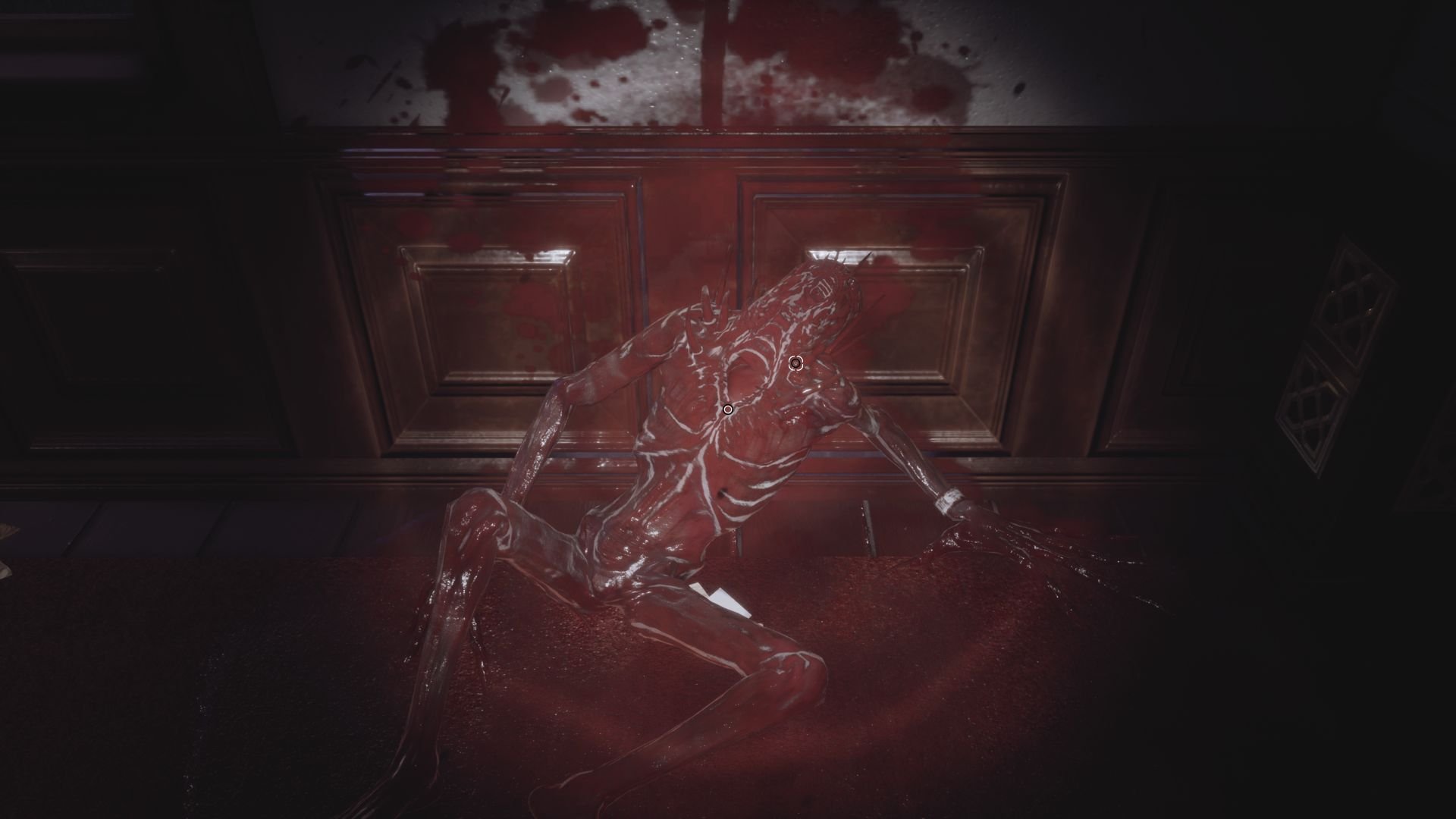Through the Lens of Horror.
Indie horror games, especially those that wear their influences on their sleeves, either capture what made their inspirations so beloved, come up just a bit too short to fully pull it off, or fail miserably and hope that a sale price will entice some unsuspecting buyer. Thankfully, Fobia: St. Dinfna Hotel, which is developed by Brazilian developer Pulsatrix, finds its footing nestled somewhere between those first two examples, creating a tense and creepy atmospheric survival horror experience, that does, sometimes feel a bit too clunky and repetitive across its roughly 8-9 hour length.
Clearly inspired by old-school Resident Evil, as well as its modern first-person entries in Resident Evil VII and Village, Fobia: St. Dinfna Hotel can often at times feel as if it was made from some of the series’ most notable aesthetics and mechanics. The hotel can often capture the Spencer Estate Manor in all its glory, complete with its obsession with specialized keys, statues, puzzles, and secrets that dig deep below its foundation. While Resident Evil is certainly the blueprint here, Pulsatrix also pulls from Silent Hill in some cases and even a glance towards the Fatal Frame series as well.
Fobia: St. Dinfna Hotel sees you take on the role of Roberto Lopes, an investigative reporter who was tipped off towards a peculiar mystery surrounding the small town of Treze Trilha. While much of this has to do with sightings of a young girl in a gas mask, his desire to get to the root of the issue starts to show that there is far more going on here than he was led to believe and discovers the very reason why he was requested to look into these matters to begin with.
Before the hotel becomes a nightmarish place filled with just as much dread as there are creatures that skulk about, Roberto loses contact with his client who invited him there in the first place. There are moments when the two converse on the phone, but his client always seems to be just out of reach when the two are meant to finally meet up. For as many answers as she can provide Roberto, it always ends him with far more questions. While the voice acting isn’t always decent by any means, I appreciated that Roberto held nothing back during his frustration, despite it never really gaining him anything fruitful.
The reasons for Roberto’s presence and the narrative that weaves around his time at the hotel likely won’t shock anyone who is a diehard fan of the genre, but it did dangle the carrot just well enough to keep my interest and is one of the few survival horror games to actually have me read each and every document and scour around for every recording I could find, despite the appalling voice acting contained within those recordings. In fact, by doing so not only did I have a leg up on the passcodes or safe combinations to drip-feed me even more ammo or helpful items, but it allowed me to put two and two together surrounding just exactly why Roberto was requested to the hotel in the first place, hours before the reveal.
Fobia: St. Dinfna Hotel largely takes place entirely in the titular hotel, with numerous areas that have been destroyed or blocked off, thus causing you to track down items to navigate around. This involves a wealth of keys, passcards of various colors, and even fixing the elevator and finding the individual buttons for it, even though technically you should be able to pop a button onto any floor and use it. There are a few distractions from Roberto’s time in the hotel to where you’ll explore a moment or two in the past as well as a secondary location later on, but the bulk of your 8-9 hours will see you exploring the dark and moody St. Dinfna.
The core gameplay that makes up this game is, as I’ve mentioned, a very similar gameplay loop to old-school Resident Evil, albeit in first person like its more modern entries. As you explore the hotel, you’ll track down documents and recordings that illustrate the deeper story, locate a variety of keys, passcodes, and items that can increase your carry capacity as well as craft healing items to keep you alive. You’ll have a variety of guns in a pistol, machine gun, shotgun, and magnum, with the latter being a weapon that is very easily missed if you don’t return to a prior area with a newly discovered item.
Inventory management is one of my biggest gripes here, and while storage chests are pretty damn frequent, it still becomes a bigger chore than it needs to be when you have to fill much of your game length with a lot of backtracking. I do like that you can expand your carrying capacity as you track down additional satchels, but some items make no sense as to why they should really occupy a space, such as items that are crucial to the gameplay, such as your camera, which I’ll dive into soon, as well as a key item in the game’s final moments as you are literally wearing it. Still, the reliance on multi-color keycards or facility clearance cards all requiring separate spaces is just a tired and poor design choice.
One of the best mechanics that Fobia: St. Dinfna Hotel brings is a supernatural camera lens that allows you to see into another time period, altering the items and world around you, to a small but still impressive extent. This allows you to pass through certain walls when looking through the viewfinder, to discover items that don’t exist in the present-day timeline. I do wish the game took this a bit further as it’s only used to any huge degree just a few times, and while this can affect areas and items around you, it doesn’t have any sort of interaction with the game’s creatures. What I love about this feature; however, is that areas, where it is used, have small handprints to indicate that the camera can have some effect there. This isn’t always the case, but it is more often than it is not.
The game also hosts a ton of puzzles, far more than I was expecting, with one of them being a mysterious box that continues to offer up more as you dive deeper into it. You’ll have some genre standards such as a piano puzzle, or one that requires you to use your camera to find the solution, and then find where that makes sense in the hotel. I never found that I was stumped by any particular one, and was sort of disappointed that many of the locked doors simply had their code scrawled out right next to the lock, camera vision, or otherwise; it felt lazy.
Another of the game’s mechanics is a specialized rotating key that you’ll track down that can be used to unlock special doors and chests that have a unique lock on them. It’s a nice system that truncates the amount of key variety, even if the game still floods you with a ton of old-fashioned keys and colored passcards. I will say that it is only soured a bit due to that most of the lock symbols are often drowned out in darkness, making it sometimes far too difficult to even see the symbols. This required me to change my brightness settings to open the lock and revert back once I solved it. Occasionally, my flashlight would be angled in such a way where I didn’t have to, but that maybe happened three or four times.
As you explore, solve puzzles, or use the camera to discover places that are off the beaten path, you’ll find upgrade items that can see your reload speed or damage increase across each weapon, or increase the range of your camera’s night vision. Each weapon can take a lot to upgrade, but apart from diving into new game+ you’ll never have enough to fully kit out everything in one go, so this causes you to favor what weapons you’ll want to fully take advantage of. Each upgrade item you’ll find grants you one point, with upgrades costing anywhere from low single digits to well over a dozen, but occasionally you’ll find upgrade items that grant five, you just have to keep an eye out for them.
Regardless of the upgrades, your weaponry is fairly decent and bullets are pretty common, especially if you turn on the ammo assist feature that can see more ammo appear during boss encounters. Each gun handles fairly well, but this isn’t a game that I would say you are playing for the combat. Shooting can only be done when aiming down sights as there is no from-the-hip shooting. There is an auto-aim assist, but it barely moved to aid in any way where it felt helpful. Thankfully, what you are often aiming at moves fairly slow, so you are given more than enough time to really aim your shot well enough.
The bulk of your threats here are humanoid creatures that have a glowing red center, which if hit exactly perfect, can down them practically in one shot. Miss, and you’ll be consuming far more bullets as just hitting their non-vital parts can see you investing four to five bullets at minimum. If you let them get too close, they will charge you and Roberto unfortunately has no melee skills or a knife to fend them off. While I really like the design of these creatures, they make up 98% of your encounters with no variety among them.
Otherwise, there are small little mutated cockroach types that usually travel in packs, and while you can usually one-shot them, they can sometimes come out of nowhere and sink their fangs into you, causing Roberto to curb stomp them after taking a small amount of damage in a canned animation. My biggest issue with them is that they can often stack up if you miss them all, meaning you’ll be forced to take all three of them biting you back to back with no ability to avoid it.
Apart from these two enemy types, you also have a few boss encounters. These are actually rather fun and while there are not too many of them, they never feel like the same encounter. One has you facing off against a large multi-legged creature that retreats into slimy bug walls littered around a small area of the second floor, to a large nimble creature that jumps from several balcony railings as you attempt to dodge its slam attack. Pulling more from Resident Evil is a Mr. X, or Nemesis-type character that hunts you down at key points in the game. These are scripted moments that usually just have you running away from them, but they happen so infrequently that it actually makes them more memorable when they do happen. The final time you encounter them is a fairly alright affair, but I sort of wish that the battle had more of a gameplay twist to it rather than them merely being a bullet sponge.
Survival is also hampered by a real lack of mobility in your character’s movement, especially as a few encounters are designed in such a way where it feels like Roberto should have had some sort of dodge or the ability to get out of the way a bit quicker. There is a run, but the stiff movement often doesn’t really convey that added boost of trying to move a little faster. I’ll also stress that this game feels designed more around a mouse guiding your cursor as Roberto will shift his footing when moving slightly, which can cause you to select drawers and interactable objects instead of the items contained within them. There is also a computer you’ll interact with that is a pain to use with a controller, but that is just a mere nitpick than anything groundbreaking.
While the voice acting can range anywhere from bad to good, to slightly more than good, it is the visuals that are at least somewhat more consistent. The important things such as the hotel and its few creatures are well done, detailed where they need to be, and largely don’t disappoint. There is some repetition in some of the decorative elements of the hotel, but overall the game does what it needs to do to sell its mood, atmosphere, and tone. While there are few moments where you actually see another person, which is largely confined to just its brief opening, the character models are incredibly lacking and thankfully their appearance makes up maybe ten to fifteen minutes of the entire game.
Fobia: St. Dinfna Hotel is clearly built to work through its inspirations to create a tense and fearful experience. There are a few mistranslations with it being adapted to English, as well as a few spelling errors found throughout its documents, but in regards to more pressing issues, I do feel the item management limitations cause far too much backtracking, and its reliance on too few enemy types does cause encounters to feel less exciting. Still, the game achieves far more than its stumbles as while the camera mechanic isn’t as wide or varied as it could be, it lays the foundation for what could be something to break away from merely being a clone of its influences. Fobia: St. Dinfna Hotel can be a little clunky at times, but it does thankfully succeed in the end.
Developer - Pulsatrix Studios. Publisher - Maximum Games. Released - June 28th, 2022. Available On - Xbox One, Series X/S, PlayStation 4/5, Microsoft Windows. Rated - (M) Blood and Gore, Strong Language, Intense Violence. Platform Reviewed - Xbox Series X. Review Access - A review code was provided by the publisher for the purpose of this review.


